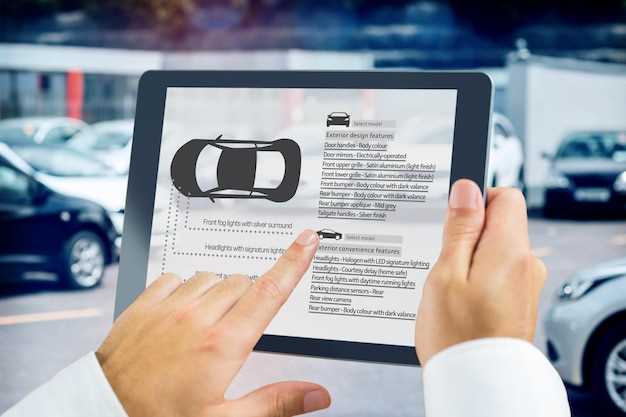
In the highly competitive market of Japanese Domestic Market (JDM) cars, the importance of thorough documentation cannot be overstated. Prospective buyers are increasingly discerning, placing significant value on a vehicle’s history as it directly impacts its resale potential. By meticulously recording every aspect of a car’s journey, owners can enhance transparency and build trust with potential buyers, ultimately leading to successful sales transactions.
When it comes to JDM vehicles, unique features and modifications often attract enthusiasts, but they can also raise questions. Maintaining a detailed record of previous ownership, maintenance work, and any upgrades or repairs can significantly influence a buyer’s perception of value. A comprehensive history not only showcases the car’s condition but also demonstrates the owner’s commitment to proper care and preservation, making it a key factor in achieving a favorable resale price.
In today’s digital age, documenting a JDM car’s history has become easier than ever. Utilizing tools such as service records, photographs of modifications, and even social media posts can create a compelling narrative. This narrative not only serves as a testament to the vehicle’s past but also as a powerful sales tool that can sway potential owners in favor of making a purchase. As the market for JDM cars continues to grow, understanding the significance of documentation will be crucial for anyone looking to maximize their investment in these iconic vehicles.
How to Gather and Maintain Comprehensive Service Records
Maintaining detailed service records for your JDM vehicle is crucial for preserving its value and ensuring a successful resale. Comprehensive documentation not only reassures potential buyers of the car’s history but also highlights its maintenance and care. Here are key strategies to effectively gather and maintain these records.
First, create a dedicated folder or digital file where all service documents can be stored. This should include receipts for routine maintenance, repairs, and any modifications made to the vehicle. Every time maintenance is performed, ensure you obtain a detailed invoice that specifies the work done, parts replaced, and the date of service.
Second, keep a maintenance schedule. Record every service appointment, noting the mileage and the type of work executed. This log helps in tracking the vehicle’s upkeep over time and serves as a valuable reference point for both you and potential buyers.
Utilizing digital tools can further enhance your record-keeping process. Many car owners now use apps designed for tracking vehicle maintenance. These apps can remind you of upcoming services and allow you to store digital copies of all relevant documents securely.
Additionally, when sourcing parts or services, choose reputable mechanics or dealerships that provide detailed service reports. This not only ensures quality work but also contributes to a more thorough service record, which is vital during resale negotiations.
Lastly, incorporate a section in your records for any accidents or modifications. Documenting this information transparently can greatly enhance trustworthiness in your car’s history, making it more appealing to prospective buyers.
By diligently gathering and maintaining comprehensive service records, you enhance your vehicle’s resale value and bolster buyer confidence, leading to a smoother sales process.
Strategies for Recording Ownership and Modifications

Effective documentation of a JDM car’s history is crucial for maximizing its resale value. Accurate records provide potential buyers with confidence regarding the vehicle’s condition and modifications. Here are several strategies for recording ownership and modifications.
1. Maintain a Detailed Ownership Log: Keep a chronological log of all previous owners. Include important details such as purchase dates, mileage at the time of each sale, and any notable incidents during ownership. This history not only helps establish authenticity but also adds value to your documentation.
2. Document Modifications Thoroughly: Every modification made to your JDM car should be meticulously documented. Create a dedicated section in your ownership log that includes descriptions, dates of installation, and receipts for parts. This detailed account showcases your investment and commitment to quality.
3. Utilize Digital Tools: Leverage technology by using apps or software specifically designed for vehicle maintenance and history tracking. Digital records can be easier to organize and can store photographs of modifications alongside written descriptions, enhancing the visual appeal of your history.
4. Collect Service Records: Ensure that you keep all service and maintenance records in one place. These documents should include oil changes, repairs, and routine service checks. A complete service history reinforces the vehicle’s reliability and can significantly influence potential buyers.
5. Photograph Changes and Repairs: Visual documentation is as important as written records. Take high-quality photos of the car before and after modifications. This not only helps track visual changes over time but also serves as a strong selling point when demonstrating the car’s evolution to prospective buyers.
6. Use a Binder or Digital PDF: Compile all documentation into a binder or a digital PDF file. This organized collection makes it easier for potential buyers to review the vehicle’s history comprehensively. Include sections for ownership, modifications, service records, and photographs.
7. Share Your Story: Personal anecdotes related to your ownership experience can enhance the vehicle’s appeal. Include stories of road trips, car shows, or memorable moments that can make the car more relatable and attractive to buyers. This human element can set your vehicle apart in a competitive market.
By implementing these strategies, you can create a compelling record of your JDM car’s history, making future sales not only easier but also more rewarding.
Best Practices for Presenting Documentation to Potential Buyers

When it comes to selling JDM cars, effectively presenting documentation can significantly influence a buyer’s perception and willingness to purchase. Clear, organized, and comprehensive documentation helps to convey the car’s history and build trust with potential buyers. Here are some best practices to consider:
1. Organize Documents Chronologically
Arrange all documents related to the car’s history in chronological order. This includes maintenance records, service history, previous ownership details, and any modifications made. An organized presentation allows potential buyers to easily follow the car’s journey and understand its care over time.
2. Include a Comprehensive Vehicle History Report
A vehicle history report is crucial for establishing transparency. This report should outline past accidents, title changes, and any outstanding recalls. By showcasing this information upfront, buyers can feel reassured about the car’s history and condition.
3. Highlight Key Maintenance Records
Emphasize significant maintenance records and highlight any major repairs or parts replacements. This not only showcases the diligence of previous owners but also indicates that the car has been well-cared for. Use a dedicated section in your documentation specifically for these records.
4. Provide Original Documentation
Whenever possible, include original documents such as the owner’s manual, warranty information, and receipts for work done. Original documents not only enhance credibility but also add value to the overall presentation of the car’s history.
5. Use Clear and Concise Language
When creating any written content about the car’s history, use clear and concise language. Avoid jargon that might confuse potential buyers. Instead, provide straightforward explanations of service records, modifications, and history to ensure that all buyers, regardless of their knowledge level, can understand the information presented.
6. Incorporate Visuals
Where applicable, incorporate visuals such as photos of service records or relevant modifications. Visual documentation can enhance understanding and engagement, making the history more tangible and relatable.
7. Be Honest About the Car’s History
Honesty is crucial in establishing trust. If there are any blemishes in the car’s history, such as a previous accident or major repairs, it is better to disclose these upfront. Buyers appreciate transparency, and being forthright can ultimately lead to a smoother sale.
8. Prepare Digital Copies
Consider preparing digital copies of documentation for potential buyers. This allows for easy sharing and ensures buyers can have immediate access to the car’s history, even after viewing the vehicle in person. Ensure these digital copies are well-organized and labeled for quick reference.
By adhering to these best practices, sellers can effectively present the documentation of their JDM car’s history, fostering trust and facilitating informed decision-making for potential buyers.




